After watching Watchmen I have read the original comic book and the Watchmen title sequence was a nice way to include in short the enormous previous history (like the story of the Minutemen) that couldn’t fit into the film. This intro is one of my favorite title sequences. The sequence is full with secret references and well known historic moments. The movie (or comic) is the idea of a “parallel” universe where superheroes really exist. The would-be heroes of Watchmen have staggeringly complex psychological profiles” and they have more human like characteristics then the usual known superhero character, which includes all kinds of weaknesses and twisted mindsets. They are not “good” or “evil” in the normal black and white superhero manner, where in the end the super duper guy stops the super evil one from destroying a whole city or whatever. So in this story one of them kills JFK and another helps the U.S. winning the vietnam war by literally bursting the enemy into pieces.
Also very remarkable in the title sequence is that almost every scene is taking place in front of a camera or starts with a photograph or has a television included. This gives the feeling for me of historic moments that got pointed out by iconic images and that our memory gets influenced by these pictured moments.
During the comic book there is always one guy reading a comic and sometimes short sequences of the comic this guy is reading are popping up parallel to the main story YOU are reading. The comic that this guy is reading is a pirate story because in an universe where superheroes really exist, superhero comics got out of style. Sometimes the pirate comic text is overlapping with the events of the Watchmen storyline and it happens that the sense fits perfectly. So there is always this nice feeling of getting one layer up, which means the storyline of Watchmen fitting perfectly with your reality.
I had the feeling with the title sequence, where in mostly every scene a camera is moving in slow motion around the scene while in the scene another camera takes a picture of this moment and often these moments refer to real historic moments and iconic pictures, that here you also have a nice multilayered storyline.
.
.
The not-killing of Bruce Wayne’s parents:
The opening shot of the title sequence (at the start of Bob Dylan’s “The Times They Are a-Changing”) led to some speculations that had swept through the web, because the couple on the left side of the picture at the back entrance of the opera looks familiar to Mr. and Mrs. Wayne (see third picture). There are also some Batman posters (better seen in the second picture) so the reference to Batman is kind of obvious. Also over the announcement board on the wall is written “Gotham Opera House” and there is also an announcement called “Fledermaus” (bat). The conclusion is that Nite Owl (the first one from the Minutemen) stopped Batman from popping up in their universe because he actually saved Mr. and Mrs. Wayne from being shot by a villain.
There is a sort of logical error in this, like how can there be Batman posters when Batman isn’t even “born” yet and as far as I remember Mr. and Mrs. Wayne didn’t watch an Opera called “Fledermaus” (or maybe I just missed something) but the reference is nice anyway.
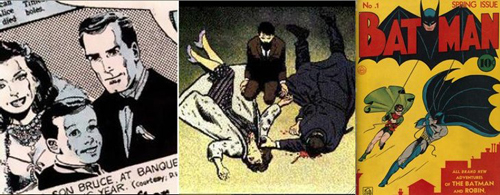
.
.
The Enola Gay:
The fifth scene starts with an airplane that looks exactly like the Enola Gay, which is the aircraft that dropped the first atomic bomb code-named “Little Boy” over Hiroshima. The Watchmen version has Sally Jupiter on the side.
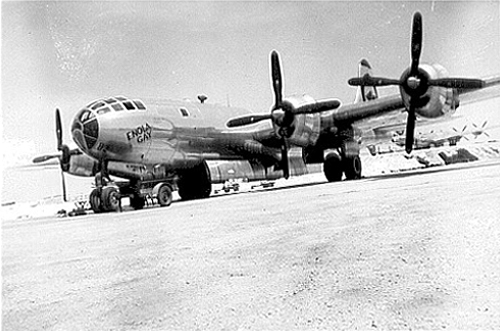
.
.
V-J Day in Times Square (August 15, 1945 ):
“V-J Day in Times Square” (Victory over Japan Day) is a famous photograph by Alfred Eisenstaedt. He describes the moment when he took this picture in one of his book (The Eye of Eisenstaedt): “I was walking through the crowds on V-J Day, looking for pictures. I noticed a sailor coming my way. He was grabbing every female he could find and kissing them all — young girls and old ladies alike. Then I noticed the nurse, standing in that enormous crowd. I focused on her, and just as I’d hoped, the sailor came along, grabbed the nurse, and bent down to kiss her. Now if this girl hadn’t been a nurse, if she’d been dressed dark clothes, I wouldn’t have had a picture. The contrast between her white dress and the sailor’s dark uniform gives the photograph its extra impact.”
In the movie’s introductory sequence The Silhouette (member of the Minutemen) takes the place of the sailor and you have a perspective that includes Eisenstaedt taking the famous picture.

.
.
In the original comic The Silhouette got expelled by the group to minimize the P.R. damage after the press revealed that she was living with another woman. Six weeks later, she and her lover were found murdered. The intro sequence refers to this event by showing the scene of the crime and also here a camera catches the events.
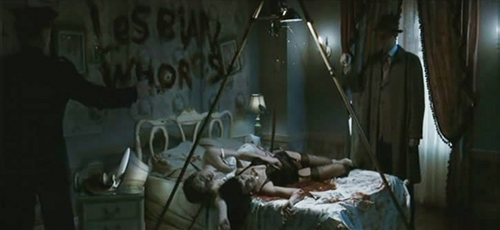
.
.
The Last Supper:
The reference to “The Last Supper” from da Vinci is sort of obvious here… but you see also Hooded Justice and Captain Metropolis (both from the Minutemen) closely together in the right corner and in the comic it is also plainly put that they had an extended homosexual relationship, including squabbling “like an old married couple”. It is also mentioned that at some point it got harder to cover up for the two gay heroes.
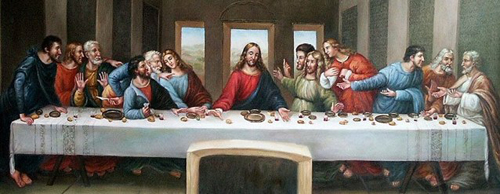
.
.
JFK assassination by the Comedian:
In the title sequence you see the killing of JFK and a panning reveals that he got killed by the Comedian. In the comic book it is just vaguely implied that Blake either was the actual assassin or knew of the assassin’s plot beforehand. In the scene directly after the title sequence, when some policemen investigate the murder of the Comedian in his apartment, you can clearly see a framed photograph with the Comedian and Nixon shaking hands. It was known that he was working for the government, so the sequence of images could lead to the conclusion that people inside the government were behind the assassination.
What I also find very impressive is the similarity to the original JFK murder footage seen in the third and fourth image below and even better seen in the video version you find when you google it.
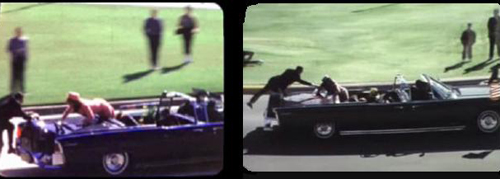
.
.
Buddhist monk setting himself on fire in Saigon:
This scene first refers to Laurie’s (aka Silk Spectre’s) snow globe that stands on the television. In the comic book every “superhero” as his own storyline that goes deeper into the character and tells more about the motives and how they could become like they are. I don’t want to spoil anything, so I’m not going into detail. Of course most of this didn’t fit in one movie… even if the director’s cut is 186 minutes long.
But it also refers to an historical event where an monk burned himself to death to protest against the persecution of Buddhists by South Vietnam’s administration. Photos of his self-immolation circulated widely across the world.
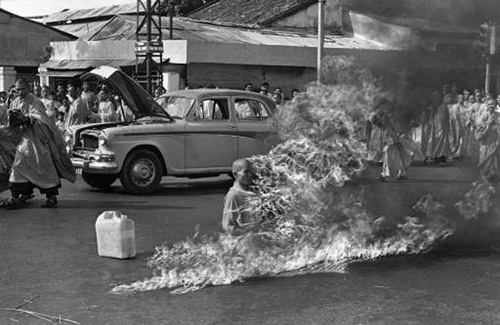
.
.
Anti War Protests:
Thousands of anti-war activists had gathered in front of the Pentagon on 21 October 1967 to protest against America’s involvement in Vietnam in Washington DC. The original picture was taken by Marc Riboud and it became a well-known symbol of struggle for peace and non-violent resistance.
.
.
Apollo Moon landing:
I really like this one. “That’s one small step for a man, one giant leap for mankind” and really hardcore peanuts for Doctor Manhattan.
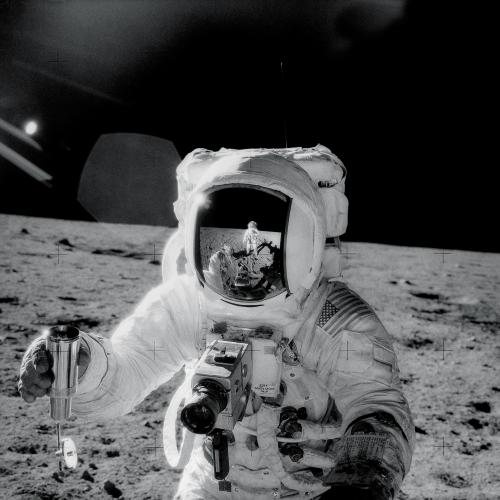
.
.
Studio 54
And here we have Ozymandias at Studio 54 and the two guys on the left look like David Bowie and Mick Jagger and the guys on the right seem to be the village people.
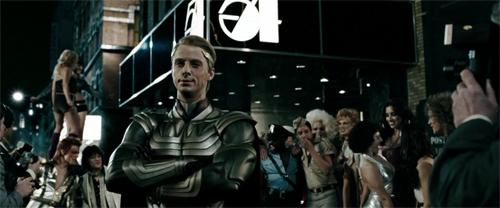
.
.
There are some more references to discover…
see the whole intro on youtube
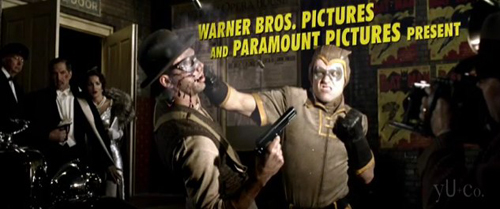
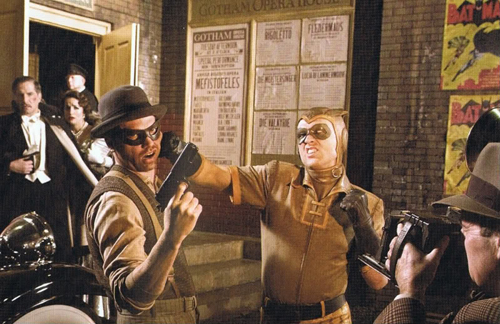
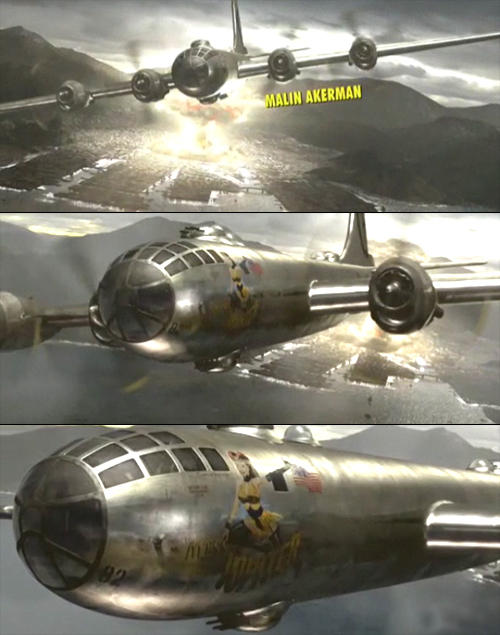
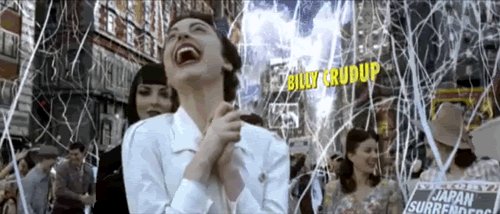
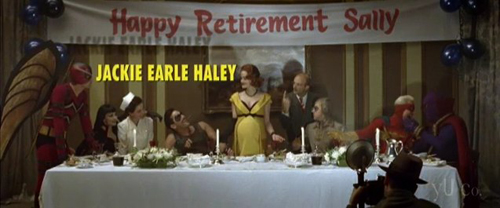
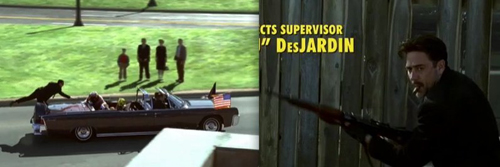
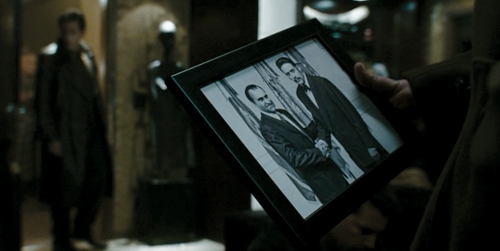
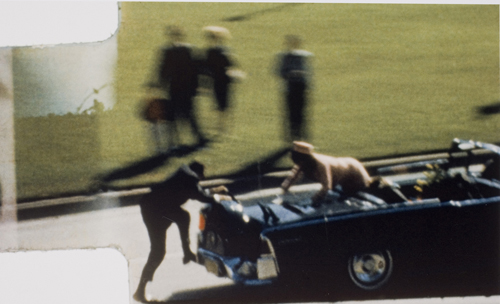
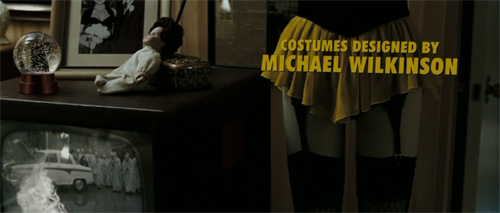
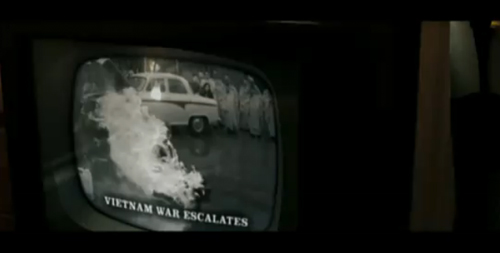
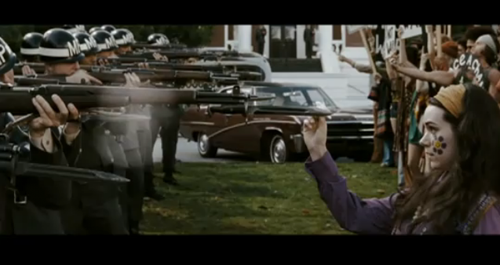

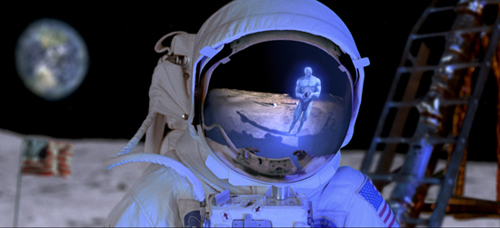
1 Comment
Join the discussion and tell us your opinion.
Todos los sabía. Pero me desayunaste con la NO muerte de los Wayne. Realmente gracias por ese detalle revelador, porque me has dado la prueba irrefutable de algo que me di cuenta en su posterior película: Watchmen y Superman vs Batman son un díptico que siempre tuvo en su alma.
Muchas gracias. Me extenderé en mi página personal sobre el tema, apenas tenga tiempo.